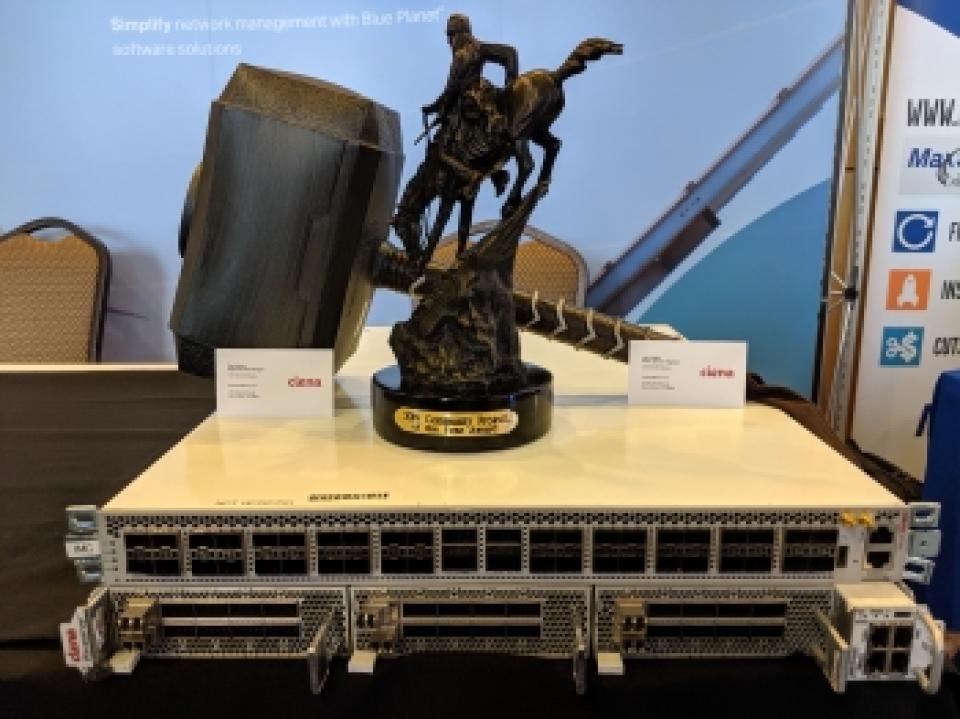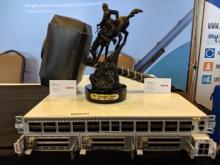
Fast, affordable Internet access for all.

There’s a new Thor in town, but instead of lighting up the night sky like the Norse god of thunder, it’ll be lighting up communities in rural Colorado with fiber optic connectivity.
A group of local governments and private partners, led by Northwest Colorado Council of Governments (NWCCOG), recently completed the first phase of Project THOR, a middle mile fiber network that will enable better connectivity in the participating towns, cities, and counties. The network, owned by NWCCOG, provides backhaul to local governments looking to connect public facilities, schools, hospitals, and other community anchor institutions. It’s also available to Internet service providers (ISPs) to serve residents and businesses.
Project THOR brings much needed redundancy to the region’s broadband infrastructure, where previously a single fiber cut could take entire communities’ health and public safety services offline. It also promises great cost savings for localities and ISPs. Perhaps most importantly, the new network gives communities the necessary leverage to improve local connectivity beyond begging the incumbent providers for better broadband. Jon Stavney, executive director of NWCCOG explained on Community Broadband Bits episode 406:
This project allows these local governments to actually have a lever to pull to hopefully affect local service, however they can do that, with whatever partners come to the table . . . They’re able to actually act.
Building Toward a Network
NWCCOG, which is composed of member governments in and around Eagle, Grand, Jackson, Pitkin, and Summit Counties, coordinated broadband efforts in the region even before Project THOR began. A number of years ago, the council invested in a regional plan and hired a broadband coordinator, Nate Walowitz, to offer technical assistance to the member governments.
At the time, communities were taking a variety of approaches to bolster connectivity. Some wanted to provide broadband access directly to residents, like Rio Blanco County which owns an open access Fiber-to-the-Home network. Others just needed better services for their own facilities and schools. Despite local differences, NWCCOG and its partners realized that all of the communities lacked reliable, resilient backhaul options. “The one thing that each community needed, or needs, with whatever their broadband approach is, is quality middle mile,” explained Evan Biagi of Mammoth Networks, the Project THOR network operator, on the podcast episode.
To address that need, the group decided to create a regional middle mile fiber network, naming it Project THOR after the Norse god. “The image of the hammer and breaking down roadblocks and breaking down barriers really worked,” Walowitz told the Colorado Sun.
Partners Connect Communities, Cut Costs
Project THOR is managed by NWCCOG and is a partnership among several local governments and other entities. NWCCOG members, including the towns of Breckenridge, Eagle, and Vail, as well as nearby non-member communities, including Glenwood Springs and Rio Blanco County, joined in on the project. The effort also attracted other partners, including the nonprofit Northwest Colorado Broadband, the Middle Park Health special district, and Yampa Valley Electric Association. Wyoming-based ISP Mammoth Networks operates the fiber network.

Project THOR is a Frankenstein’s monster of sorts, stitched together from existing broadband infrastructure across the region. Much of the network is made up of dark fiber segments sourced from carriers and public agencies (178 miles is leased from the Colorado Department of Transportation). This lowered construction costs substantially to only about $2.6 million. “If we had to build 400 miles of fiber, that would have been a significant investment . . . It would have been unaffordable for the region,” Walowitz told the Colorado Sun.
Approximately half of the project financing came from a $1.3 million grant from the Colorado Department of Local Affairs (DOLA), which often funds local broadband efforts. Participating partners contributed a local match to meet the remaining costs. An additional DOLA grant kicked in approximately $250,000 to cover the first few years of the lease agreement with the Department of Transportation.
Local partners pay a monthly fee to NWCCOG for ongoing operations costs. The exact dollar figure depends on the size of the community’s Meet Me Center, their data usage, and other factors. “It’s like each entity has a share in THOR. We’ve even developed a model with allocating bandwidth across the network where they can trade shares, so to speak,” Stavney said on the podcast.
Colorado Context
We’ve done a lot of reporting on Senate Bill 152, the restrictive Colorado law that forces communities to hold a referendum to reclaim local broadband authority. While the law was intended to make it more difficult for local governments to invest in community broadband networks, more than 140 towns, cities, and counties have opted out of SB 152 after it was passed in 2005. And a number of communities, including Project THOR partners Breckenridge, Glenwood Springs, and Rio Blanco County, have since moved forward with publicly owned broadband networks. In fact, SB 152 proved so ineffective that we removed it from our list of state broadband preemptions last year.
But even opponents of municipal broadband networks support Project THOR’s efforts to offer middle mile connectivity to communities and providers. Ron Rizzuto, a University of Denver professor and frequent critic of publicly owned broadband in Colorado, shared his rosier view of Project THOR with the Colorado Sun:
[THOR] is a good example of why you need the government to be the catalyst. The private sector is not stepping up . . . The government sector can help entice the private sector to participate because the private sector won’t act on its own.
However, the middle mile network does face some criticism from ISP CenturyLink, which confusingly argued that the partners should have invested in last mile connections to homes and businesses instead of a fiber backbone. “We hope that future taxpayer-funded projects focus on meeting the needs of unserved and underserved Coloradans, rather than competing with existing facilities and networks,” the company said in a statement to the Colorado Sun. It’s a bizarre statement coming from a company that currently leases access to Springfield, Missouri’s dark fiber network.
THOR Brings Reliability, Affordability
Project THOR partner communities are particularly excited about the cost savings the network creates for institutional connections. Aggregating demand across the region leads to greatly reduced transport costs, so Project THOR is able to charge half as much as other middle mile networks in the region, Walowitz told the Colorado Sun.
Community anchor institutions can feel the difference. The Steamboat Springs School District, which joined with other agencies in the community to form the Northwest Colorado Broadband cooperative, is now paying just $500 per month for significantly better access than it received previously from CenturyLink, the Colorado Sun reported. Another Project THOR partner, Middle Park Health, told the paper that it was paying “at least 10 times more per Megabit,” than it is today, calling it a “drastic change.”
Northwest Colorado households and businesses should also gain access to better broadband, thanks to the middle mile project. ISPs and local governments are expanding networks in the region, using Project THOR’s fiber backbone. Mammoth Networks started offering wireless connectivity in Kremmling last year, and local co-op Yampa Valley Electric Association is building out a fiber network. In Breckenridge, ISP Allo is providing broadband access over the town owned broadband network, Fiber 9600.
Many of the providers are drawn to expand their networks because of the increased redundancy offered by Project THOR. The middle mile network’s ring design prevents a single fiber cut from knocking an entire town offline. Before Project THOR, limited network reliability caused outages for essential services like 911 and healthcare providers, putting lives at risks. Now, fiber cuts are imperceptible. “The other day, there was a small fiber outage that affected a few of our communities,” Walowitz shared with the Colorado Sun. “And Project Thor kept going. Nobody knew.”
Listen to Community Broadband Bits episode 406 for more information on Project THOR and the partners’ efforts to improve connectivity in Northwest Colorado.

